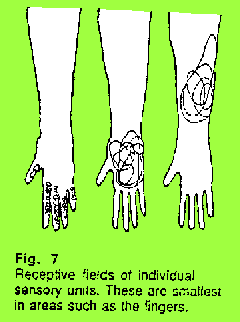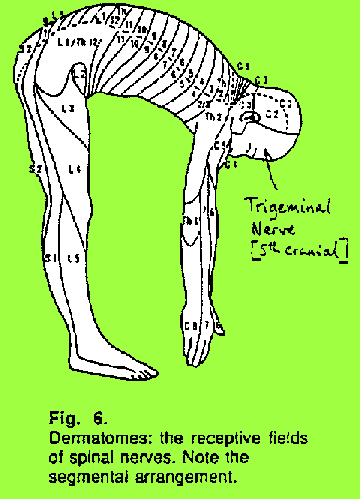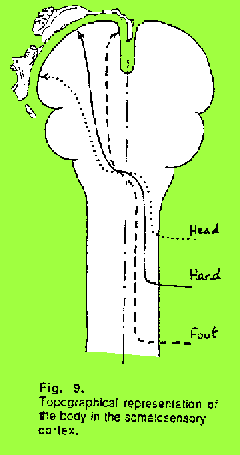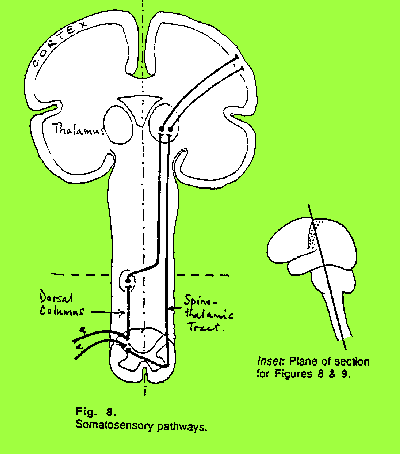
Stimulus quality: type of receptor and afferent nerve pathway activated. Specific projection pathways (tracts) in CNS to different areas of brain (cortex).
Stimulus intensity: frequency of AP firing; number of neurons activated
Stimulus timing: Duration and temporal pattern of AP firing
Stimulus location:

individual receptive fields (Fig.7) 
topographical representation of inputs to cortex.

Afferent neurons - functional differences (by size) in axon types.
(Book 3, Ch 5)

CNS pathways (Book 2, §9.5 and Book 3, Ch 5)
The peripheral neurons terminate in specific areas of the spinal cord,
e.g. the dorsal horn.
Dorsal horn neurons project to the thalamus, crossing the midline on
the way.
Dorsal Columns - fine touch,
proprioception
Spinothalamic tracts- coarse touch,
thermosensation,
nociception
Back to neuro-revision list or Tutorial
7 notes or BBB Home Page